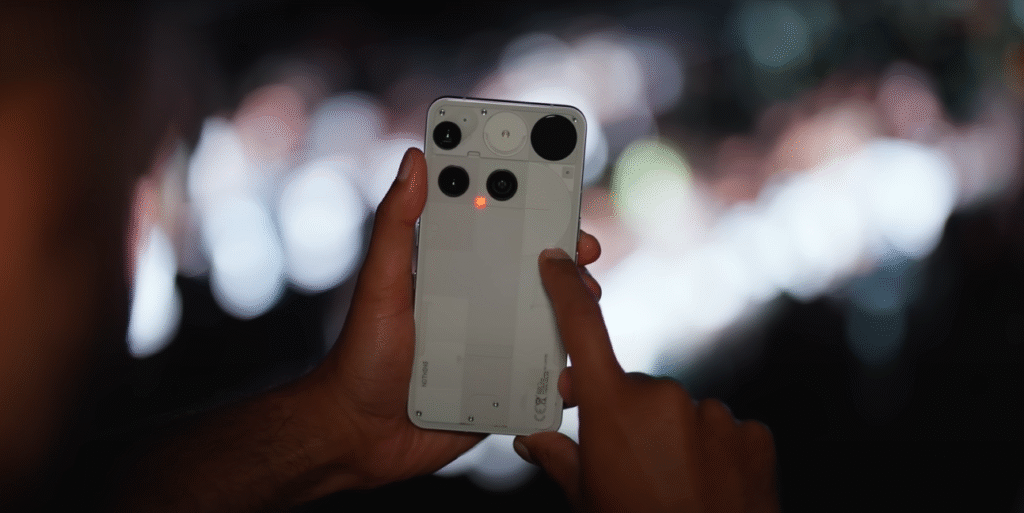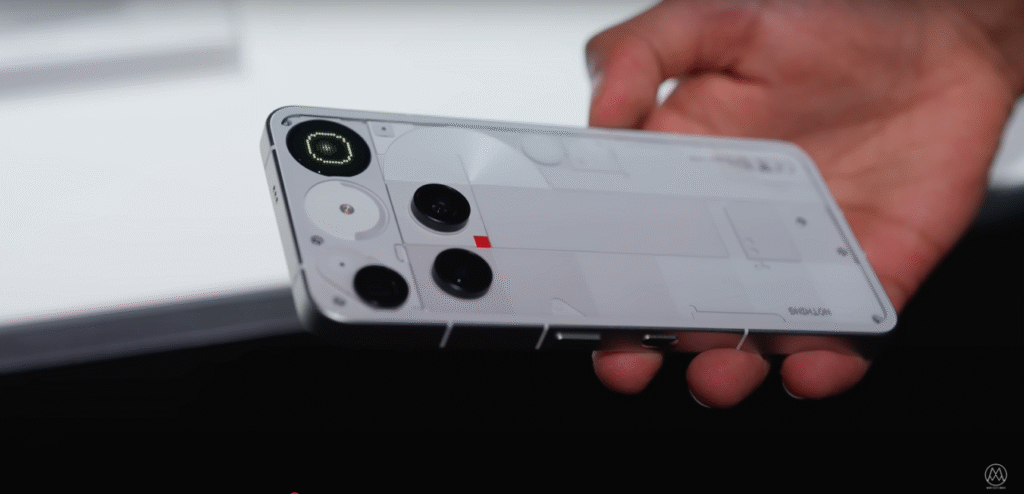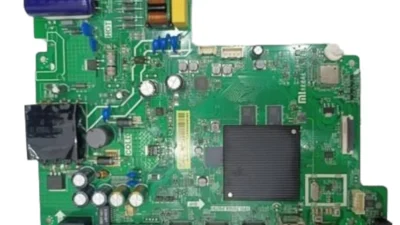Launched on July 1, 2025, the Nothing Phone (3) has sparked excitement with its Glyph Matrix, a bold evolution of the brand’s iconic LED-based Glyph Interface. From my experience, this compact, dot-matrix display on the phone’s back redefines notifications and interactivity with a retro-futuristic vibe. Priced at £799–£899 in the UK, the Phone (3) positions itself as a flagship contender, and the Glyph Matrix is its quirkiest highlight. Whether you’re a UK tech enthusiast or curious about Nothing’s design innovation, this blog dives into what the Glyph Matrix is, how it works, its features, pros, cons, and how it stacks up against the old Glyph Interface. Let’s explore why this tiny LED canvas is turning heads!
What is the Glyph Matrix?
From my experience, the Glyph Matrix is a small, circular, monochrome LED display on the top-right corner of the Nothing Phone (3)’s back panel, replacing the sprawling LED strips of the Glyph Interface. Comprising 489 micro-LEDs, it forms a dot-matrix grid capable of showing animations, symbols, and text, like a retro Game Boy screen. Unlike its predecessor’s notification-focused lights, the Glyph Matrix offers programmable, glanceable interactions, such as displaying the time or playing mini-games. It’s controlled via a dedicated Glyph Button and integrates with Nothing OS 3.5, blending style and function. While divisive for its smaller size, it’s a daring step for Nothing’s design-led ethos, appealing to UK users who love unique tech.



- Design: Circular, 489-LED dot-matrix display in top-right corner.
- Purpose: Notifications, widgets, and interactive micro-experiences.
- Control: Dedicated Glyph Button for toggling modes.
- Aesthetic: Retro-futuristic, inspired by dot-matrix displays.
Key Features of the Glyph Matrix
From my experience, the Glyph Matrix brings a host of features that make it both fun and functional. It displays notifications (e.g., caller ID, app alerts) with custom animations, acts as a selfie mirror for rear-camera shots, and supports Glyph Toys—mini-apps like Rock Paper Scissors or Spin the Bottle. The Digital Clock, Stopwatch, and Battery Indicator provide glanceable info, while the Glyph Torch offers a bright light burst. NFC animations and a Recording Light enhance usability. Open to third-party developers via a public SDK, it promises future expansion, making it a versatile tool for UK users who enjoy personalization.
- Notifications: Shows caller ID, app alerts with custom animations.
- Glyph Toys: Games like Rock Paper Scissors, Spin the Bottle.
- Widgets: Digital Clock, Stopwatch, Battery Indicator, Glyph Torch.
- Developer Access: Public SDK for custom apps and animations.
How the Glyph Matrix Works
From my experience, the Glyph Matrix is a compact LED grid that communicates through dynamic visuals, controlled by a touch-sensitive Glyph Button on the phone’s back. Tap to cycle through modes (e.g., clock, stopwatch), or long-press to display caller ID (OTA update in July 2025). It syncs with Nothing OS 3.5, letting you assign lighting effects to apps or contacts. The Glyph Mirror uses the Matrix as a low-res selfie guide, while Glyph Toys like Magic 8 Ball offer playful interactions. The 489 LEDs create pixel-level animations, reacting to sounds or NFC triggers, providing a seamless, glanceable experience for UK users who want notifications without screen time.
- Control: Tap or hold Glyph Button to switch modes.
- Integration: Syncs with Nothing OS 3.5 for custom effects.
- Interactivity: Reacts to sounds, NFC, or user inputs.
- Functionality: Selfie mirror, games, and system status displays.
Pros and Cons of the Glyph Matrix
From my experience, the Glyph Matrix is a mixed bag. Pros: Its compact design frees up internal space, enabling a larger 5,150mAh battery. The programmable micro-LEDs offer vibrant, customizable animations, and Glyph Toys add playful charm. It’s ideal for UK users seeking a unique, screen-off notification system. Cons: The smaller size feels less impactful than the Glyph Interface’s full-back lights, and its utility is niche—games and widgets may not appeal to all. Some X posts call it gimmicky, and its similarity to ASUS’s AniMe Vision raises originality concerns. For £799, UK buyers might expect more practical features.
- Pros: Compact, customizable, playful Glyph Toys, battery space.
- Cons: Smaller size, niche utility, less unique than Glyph Interface.
- Sentiment: Mixed feedback, some call it gimmicky on X.
- Comparison: Similar to ASUS ROG Phone 9’s AniMe Vision.
Comparison to the Glyph Interface
From my experience, the Glyph Matrix is a significant shift from the Glyph Interface, which used LED strips across the back of Nothing Phone (1) and (2) for notifications, timers, and charging status. The Matrix’s 489 micro-LEDs in a compact top-right corner offer greater programmability, displaying text, symbols, and games, unlike the Interface’s simpler patterns. However, the Interface’s full-back illumination felt more immersive and iconic, while the Matrix’s smaller size can seem underwhelming. The Matrix’s Glyph Button adds interactivity, but some UK fans miss the Interface’s bold aesthetic, as noted on X. The Matrix prioritizes efficiency and hardware space over visual flair.
- Glyph Interface: Full-back LED strips, simpler notification patterns.
- Glyph Matrix: Compact 489-LED grid, programmable for text, games.
- Strength: Matrix offers more versatility, interactivity.
- Weakness: Less visually striking than Interface’s bold design.
From my experience, the Glyph Matrix on the Nothing Phone (3) is a daring reinvention of Nothing’s signature LED system, blending retro charm with modern functionality. Its 489 micro-LEDs deliver customizable notifications, playful Glyph Toys, and practical widgets like the Digital Clock, making it a unique feature for UK buyers at £799–£899. While it frees up internal space and offers developer access, its smaller size and niche appeal may disappoint fans of the iconic Glyph Interface. If you’re a tech enthusiast who loves quirky, glanceable tech, pre-order the Phone (3) from July 4, 2025, via Nothing’s UK site or Flipkart in India. The Glyph Matrix is a bold gamble—does it win you over?
From my experience, it’s a 489-LED dot-matrix display on the back, showing notifications, widgets, and games like Rock Paper Scissors.
The Matrix is a compact, programmable LED grid, unlike the Interface’s larger, simpler LED strips across the back.
Yes, you can assign animations to apps and contacts via Nothing OS 3.5, with more options via third-party SDK.
It’s fun for notifications and toys but feels niche; some UK users may prefer practical features for £799.
Tap the Glyph Button to use the Matrix as a low-res guide for rear-camera selfies.
About the Author
Mrwhosetheboss I’m Arun Maini, I’m a 28 year old Economics graduate whose life’s passion is Technology, and I’m on a mission to make the most FUN and USEFUL Tech videos on the Planet!
- Second Channelyoutube.com/@MrwhosethebossPlus
- Instagraminstagram.com/mrwhosetheboss
- Twitter / Xx.com/Mrwhosetheboss
- TikToktiktok.com/@mrwhosetheboss
What’s your take on the Nothing Phone (3)? Share in the comments!
Sources
- YouTube: Nothing Phone (3) – What have you done!? (https://www.youtube.com/watch?v=k5itPbQtz_Y)
- Gadgets 360
- TechAdvisor
- The Guardian
- CNET
- 9to5Google
- Posts on X: @Gadgetsdata, @Soya_Cincau, @Sankew06, @gadget_bits




[…] Glyph Matrix, a 489-LED secondary screen, replaces the Glyph Interface, displaying widgets like battery […]
[…] my experience, the Glyph Matrix, a 489-LED secondary screen, brings a retro Game Boy vibe with widgets like a clock or stopwatch. […]